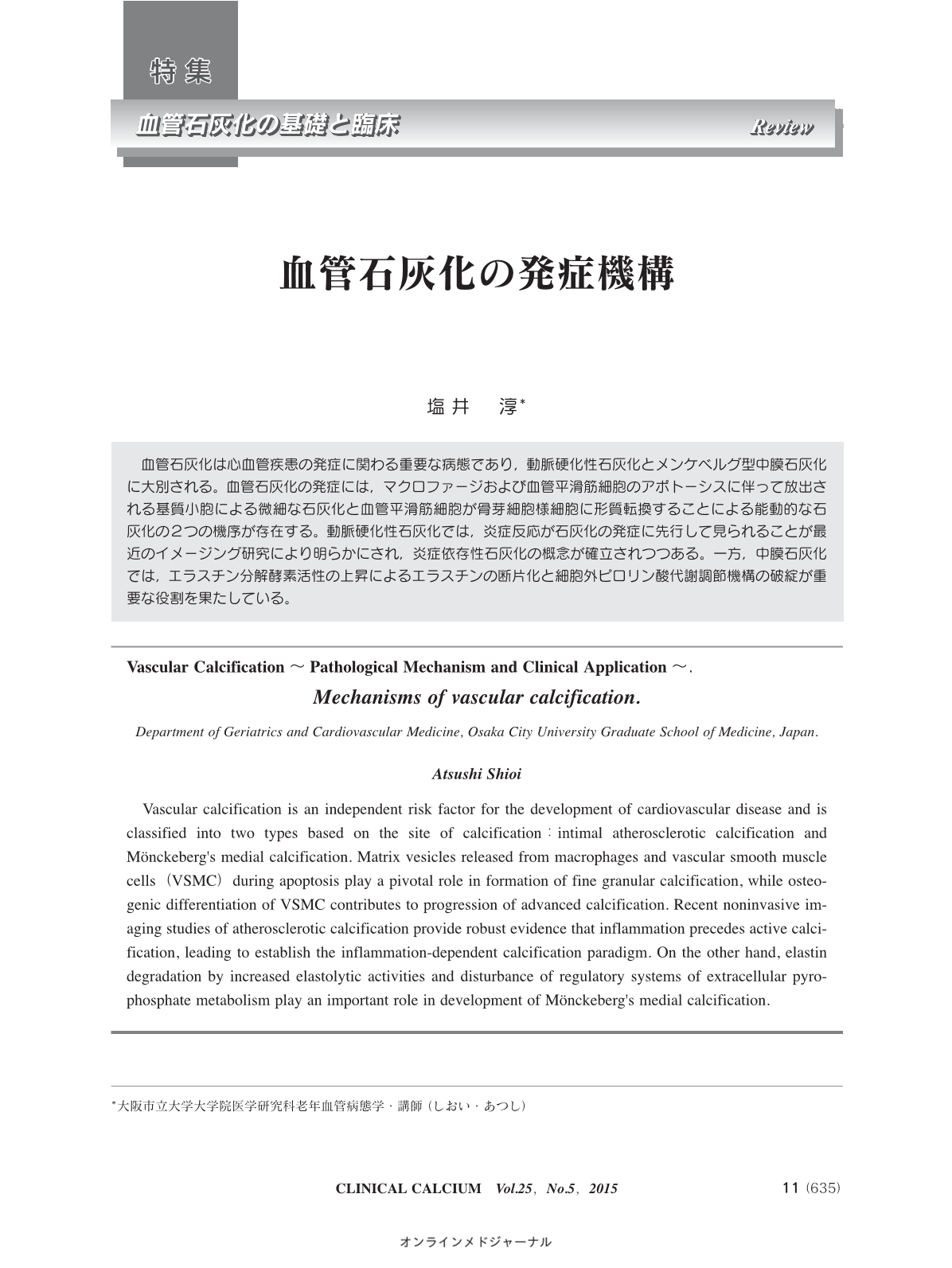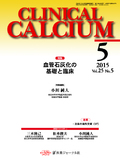Japanese
English
- 有料閲覧
- Abstract 文献概要
- 1ページ目 Look Inside
- 参考文献 Reference
血管石灰化は心血管疾患の発症に関わる重要な病態であり,動脈硬化性石灰化とメンケベルグ型中膜石灰化に大別される。血管石灰化の発症には,マクロファージおよび血管平滑筋細胞のアポトーシスに伴って放出される基質小胞による微細な石灰化と血管平滑筋細胞が骨芽細胞様細胞に形質転換することによる能動的な石灰化の2つの機序が存在する。動脈硬化性石灰化では,炎症反応が石灰化の発症に先行して見られることが最近のイメージング研究により明らかにされ,炎症依存性石灰化の概念が確立されつつある。一方,中膜石灰化では,エラスチン分解酵素活性の上昇によるエラスチンの断片化と細胞外ピロリン酸代謝調節機構の破綻が重要な役割を果たしている。
Vascular calcification is an independent risk factor for the development of cardiovascular disease and is classified into two types based on the site of calcification:intimal atherosclerotic calcification and Mönckeberg's medial calcification. Matrix vesicles released from macrophages and vascular smooth muscle cells(VSMC)during apoptosis play a pivotal role in formation of fine granular calcification, while osteogenic differentiation of VSMC contributes to progression of advanced calcification. Recent noninvasive imaging studies of atherosclerotic calcification provide robust evidence that inflammation precedes active calcification, leading to establish the inflammation-dependent calcification paradigm. On the other hand, elastin degradation by increased elastolytic activities and disturbance of regulatory systems of extracellular pyrophosphate metabolism play an important role in development of Mönckeberg's medial calcification.



